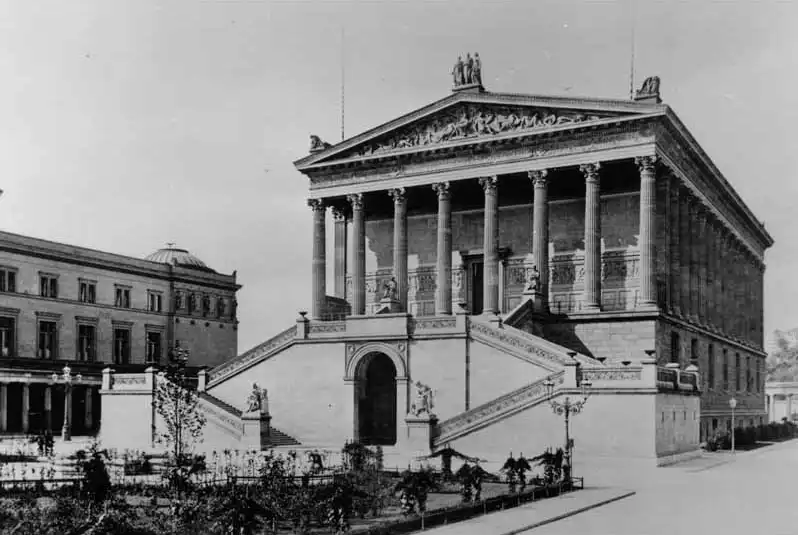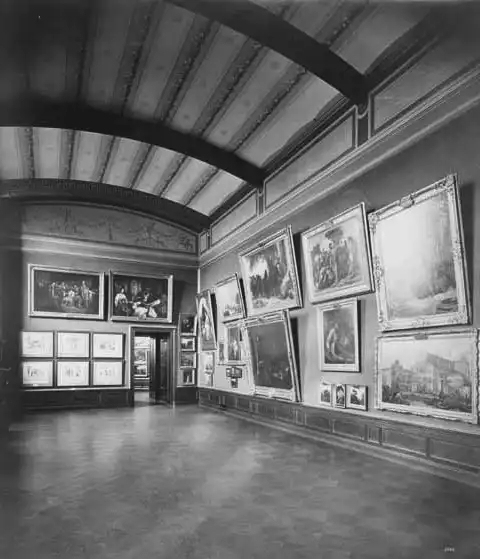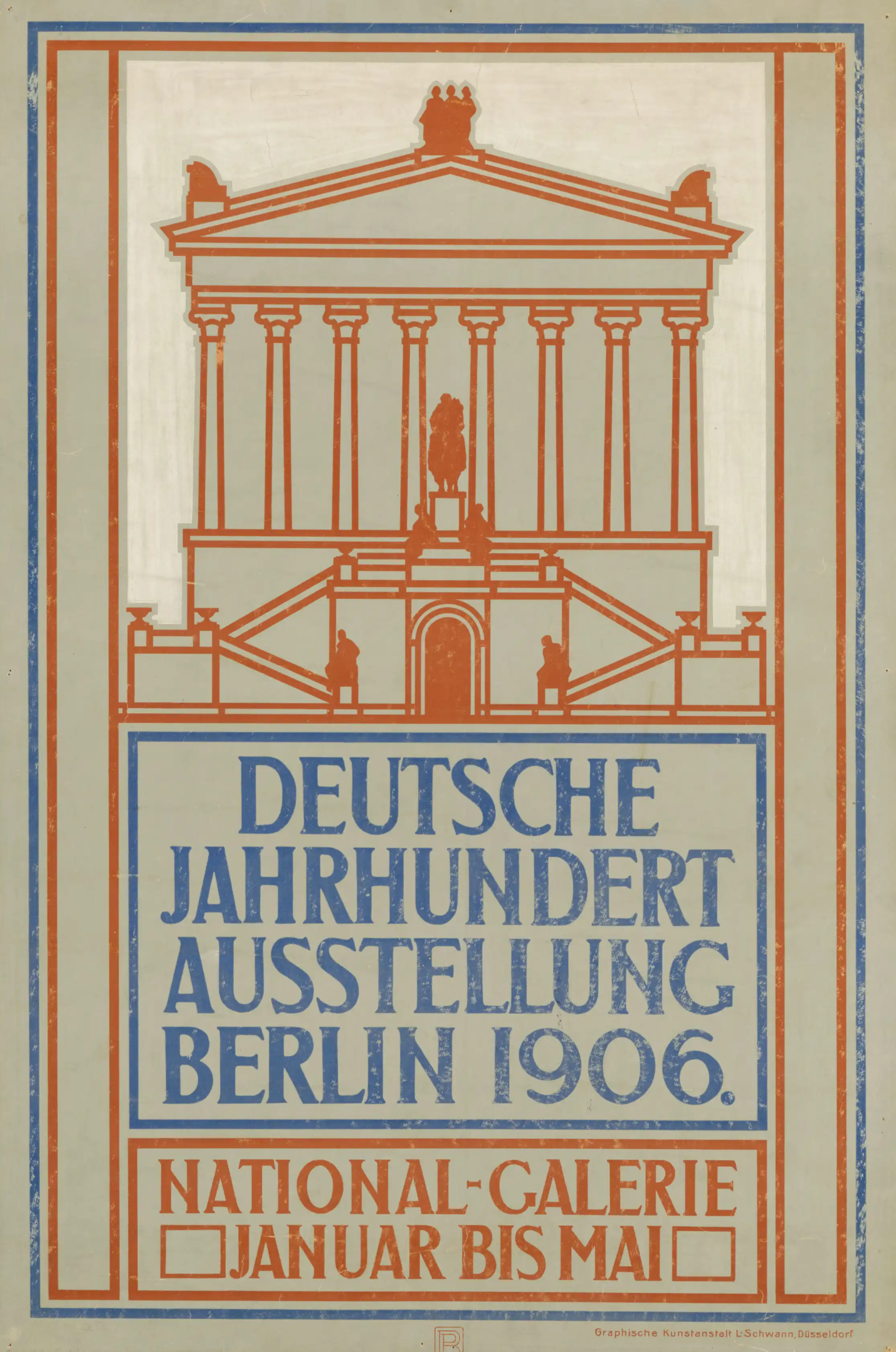Breaking Open the Canon The German Centenary Exhibition in the Nationalgalerie

Nationalgalerie, Berlin, view from the east, with the Neues Museum on the left, image from 1881
At the German Centenary Exhibition in 1906, Caspar David Friedrich was rediscovered. Many of his works were still in the possession of his family at that point. Others were found in private collections. Very few of his pictures were publicly accessible in museum collections.
Among these was the pair of pictures The Solitary Tree and Moonrise over the Sea, both in the Nationalgalerie in Berlin.
Their acquisition was owed to the Berlin banker and collector Joachim H.W. Wagener. In his will, dated 1861, he inherited his art collection to the Prussian King – on the condition that the latter established a national gallery of art. As a consequence, the Wagener Collection – including Caspar David Friedrich’s The Solitary Tree – became the keystone of today’s Alte Nationalgalerie in Berlin.
The idea behind the museum’s founding was itself very much in the spirit of the modern age: when it opened in 1876, the Nationalgalerie became the first museum for contemporary art on a national level – a nation that now included the unified Germany, not just the state of Prussia.
As part of Wagener’s collection, Friedrich’s pair of pictures was accessioned by the Nationalgalerie, and has been on permanent display there since 1876.
In the catalogue to the German Centenary Exhibition, we read:
“The Nationalgalerie has two pictures [by Friedrich] in its original collection and a third was purchased a few years ago, and the [Hamburger] Kunsthalle has also recently acquired several works by him; while another picture, among his most beautiful, has long been on view in the Weimar Museum. But they speak such a quiet language that the hurried gallery museum public would simply dash past them quite heedlessly.”
– Hugo von Tschudi, in: exh. cat. Nationalgalerie, Berlin 1906, vol. 1, p. XXVIf.

View of the exhibition in the Nationalgalerie, western gallery with works from the Wagener Collection, image from 1879
Groundbreakingly modern: the concept behind the German Centenary Exhibition
Modeled on major crowd-pulling fairs and exhibitions in the French capital, the Berlin exhibition was designed to provide an overview of 100 years of art in Germany. Especially artists who diverged from academic taste, or who were less successful or less familiar, were brought now to the public’s attention.
The period 1775–1875 must have been chosen quite consciously in order to avoid offending the establishment of the Berlin art scene around 1900.
The exhibition was curated – not without complications – by Hugo von Tschudi, director of the Nationalgalerie Berlin, Alfred Lichtwark, director of the Hamburger Kunsthalle, and Woldemar von Seidlitz, an official advisor to the General Directorate of the Royal Collections in Dresden. Contributing as well was Julius Meier-Graefe, a prominent writer on art.
As a counterpole to the still dominant model of history painting, with its emphasis on thematic content, the curators, with their selection of works, proposed a different interpretation of art history. They searched through a century of German art for developments in art according to painterly criteria such as surface, color, and light.


